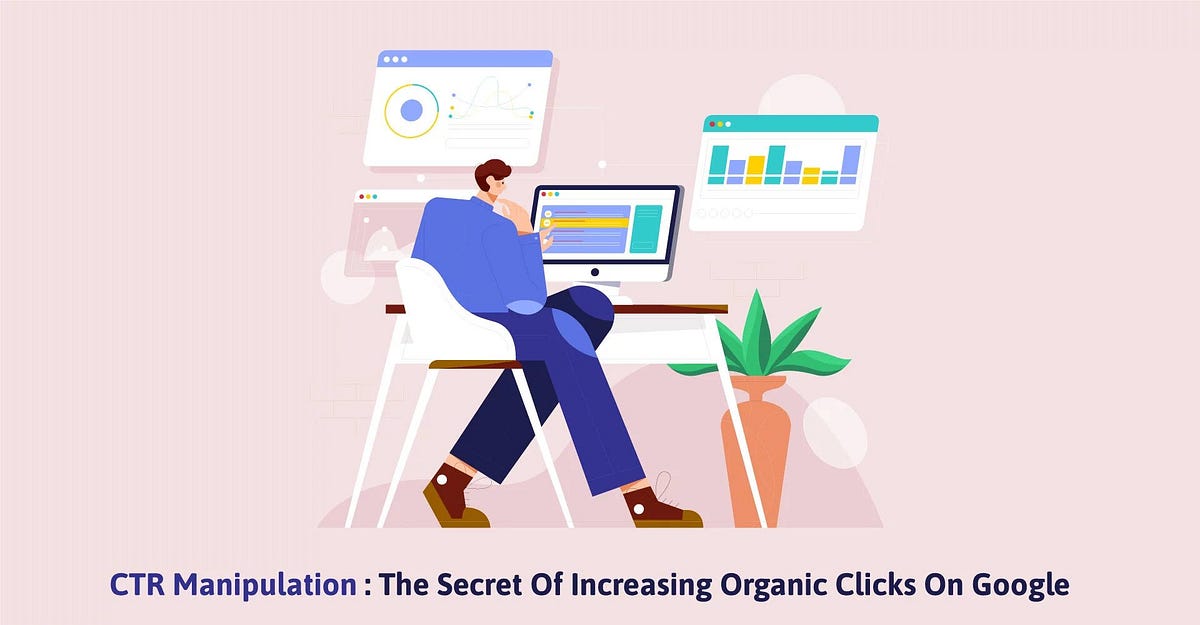CTR Manipulation Approaches: Proven Methods for Higher Involvement
CTR Manipulation Approaches: Proven Methods for Higher Involvement
Blog Article
Checking Out the Connection Between CTR Control Solutions and Individual Habits
In the world of electronic advertising, the impact of click-through price (CTR) adjustment services on customer behavior remains a facility and appealing subject. By studying the elaborate relationship in between CTR manipulation solutions and customer actions, interesting understandings emerge that might reshape our understanding of digital advertising and marketing strategies and their effects on customers.
Effect of CTR Adjustment on Habits
Analyzing the impact of Click-Through Rate (CTR) control on customer behavior exposes vital insights into the dynamics of online engagement. CTR adjustment involves artificially pumping up the number of clicks on a certain web link or advertisement to trick individuals and search engines. This method can cause a distorted understanding of a web page's appeal or importance, eventually influencing user actions.

Furthermore, CTR control can alter the information made use of by formulas to personalize customer experiences. This can result in users being offered material that does not align with their choices or passions, eventually causing a decline in customer satisfaction and interaction. Understanding the effect of CTR adjustment on individual actions is necessary for keeping transparency and count on online communications.
User Engagement With Controlled CTR
Individual engagement with adjusted CTR data frequently brings about manipulated understandings of on-line material appeal and significance. When customers communicate with web content based upon unnaturally inflated Click-Through Fees (CTR), they may think that certain info, items, or solutions are extra preferred or reliable than they in fact are. This can cause customers making decisions based upon deceptive information, leading to potentially negative outcomes.
Engagement metrics like sort, shares, remarks, and time invested in a website are often influenced by CTR adjustment. Individuals might be much more likely to engage with material that appears to have greater involvement rates, further perpetuating the cycle of skewed understandings. Consequently, content developers and advertisers may focus on creating material that produces high CTR instead of concentrating on developing genuinely beneficial and relevant product.

Emotional Results of CTR Manipulation

Additionally, the mental results of CTR control can also materialize in modified decision-making processes. Users may be a lot more inclined to click on content solely based upon its viewed appeal, as opposed to its real value or significance to their needs. This behavior change can result in a shallow involvement with online content, where users may ignore high-grade however much less prominent offerings for those with artificially improved CTRs.
Basically, the mental implications of CTR control highlight the importance of preserving openness and credibility in on-line communications to foster real individual interaction and trust fund.
Moral Factors To Consider in CTR Control
Taking into consideration the honest effects of adjusting click-through rates (CTR) in on the internet platforms is necessary for preserving integrity and trust fund within the digital ecological community. CTR adjustment elevates concerns about tricking users, distorting information analytics, and jeopardizing the reliability of on-line material. One significant ethical consideration is the prospective influence on individual freedom and decision-making. By artificially blowing up CTR, individuals may be misled into clicking on web links or ads they would not have actually picked otherwise, resulting in an insincere online experience. CTR manipulation Going Here can skew the performance metrics that organizations depend on to make tactical choices, ultimately impacting market competition and consumer count on.
An additional honest element to contemplate is the fairness of adjusting CTR to obtain an unfair advantage over rivals. Taking part in such methods not only breaches principles of fair game yet also undermines the trust fund that customers put in online platforms. It is necessary for services and electronic marketing professionals to promote ethical requirements in their practices to guarantee openness, reputation, and lasting sustainability in the on the internet environment.
Implications for Digital Marketing
CTR control can lead to manipulated data analytics, misinforming marketers into believing that their campaigns are executing better than they really are. When users realize that CTRs have actually been adjusted, it can erode trust fund in the brand, leading to lasting unfavorable repercussions for client commitment and brand reputation.
In addition, making use of CTR adjustment solutions can create an unfair affordable landscape, where companies that take part in such techniques acquire an artificial advantage over those that abide by ethical marketing criteria. This can stifle advancement and creativity in digital advertising and marketing, as success comes to be even read more concerning adjustment methods than providing real worth to customers. Ultimately, the effects of CTR manipulation for digital marketing extend past short-term gains, impacting the total sustainability and integrity of advertising and marketing initiatives in the electronic realm.
Final Thought
Finally, the connection in between CTR manipulation solutions and customer actions is intricate and complex. The impact of CTR control on behavior, user interaction with manipulated CTR, emotional results, ethical considerations, and implications for digital advertising and marketing all contribute fit this partnership. Recognizing these dynamics is vital for marketing professionals and scientists alike in order to navigate the honest effects and make the most of the performance of their digital marketing methods.
Report this page